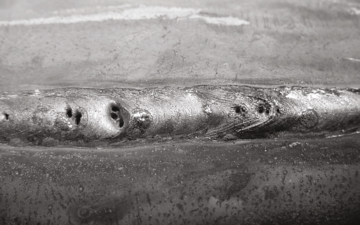What is Porosity in Welding: Secret Aspects and Their Effect On Weld High Quality
What is Porosity in Welding: Secret Aspects and Their Effect On Weld High Quality
Blog Article
The Science Behind Porosity: A Comprehensive Overview for Welders and Fabricators
Recognizing the intricate systems behind porosity in welding is vital for welders and fabricators striving for impressive workmanship. From the structure of the base materials to the intricacies of the welding process itself, a plethora of variables conspire to either exacerbate or relieve the visibility of porosity.
Comprehending Porosity in Welding
FIRST SENTENCE:
Exam of porosity in welding discloses vital understandings right into the integrity and top quality of the weld joint. Porosity, characterized by the visibility of tooth cavities or gaps within the weld steel, is a typical problem in welding processes. These spaces, otherwise appropriately attended to, can compromise the architectural stability and mechanical homes of the weld, bring about possible failings in the completed product.

To spot and measure porosity, non-destructive screening approaches such as ultrasonic screening or X-ray assessment are often utilized. These methods permit the recognition of interior flaws without compromising the integrity of the weld. By assessing the size, form, and distribution of porosity within a weld, welders can make informed choices to improve their welding processes and achieve sounder weld joints.

Aspects Influencing Porosity Formation
The incident of porosity in welding is affected by a myriad of factors, ranging from gas securing efficiency to the complexities of welding parameter setups. One critical factor adding to porosity formation is inadequate gas shielding. When the securing gas, typically argon or carbon dioxide, is not successfully covering the weld swimming pool, atmospheric gases like oxygen and nitrogen can contaminate the liquified metal, bring about porosity. In addition, the sanitation of the base products plays a significant role. Impurities such as rust, oil, or wetness can evaporate during welding, producing gas pockets within the weld. Welding parameters, consisting of voltage, current, travel speed, and electrode kind, also impact porosity development. Using incorrect setups can generate too much spatter or warm input, which subsequently can lead to porosity. Furthermore, the welding method used, such as gas steel arc welding (GMAW) or secured steel arc welding (SMAW), can affect porosity development as a result of variations in warm distribution and gas protection. Comprehending and controlling these aspects are vital for lessening porosity in welding procedures.
Results of Porosity on Weld High Quality
The existence of porosity also deteriorates the weld's resistance to rust, as the trapped air or gases within the spaces can react with the surrounding atmosphere, leading to deterioration over time. Furthermore, porosity can impede the weld's ability to hold up against pressure or impact, further threatening the overall quality and integrity of the bonded structure. In vital applications such as aerospace, auto, or architectural building and constructions, where security and toughness are paramount, the detrimental effects of porosity on weld high quality can have extreme effects, highlighting the value of minimizing porosity via correct welding methods and procedures.
Methods to Reduce Porosity
To boost the quality of bonded joints and make sure architectural honesty, welders my sources and fabricators use certain strategies focused on decreasing the formation of voids and cavities within the material during the welding procedure. One efficient method to minimize porosity is to make sure correct product preparation. This consists of detailed cleansing of the base steel to remove any kind of contaminants such as oil, grease, or wetness that could add to porosity formation. In addition, making use of the ideal welding specifications, such as the right voltage, existing, and travel rate, is important in protecting against porosity. Maintaining a consistent arc length and angle during welding likewise helps in reducing the chance of porosity.

Using the proper welding method, such as back-stepping or using a weaving movement, can also aid distribute warmth uniformly and reduce the opportunities of porosity formation. By applying these methods, welders can effectively decrease porosity and create top quality bonded joints.

Advanced Solutions for Porosity Control
Applying advanced technologies and ingenious methods plays an essential role in attaining exceptional control over porosity in welding procedures. One sophisticated remedy is using innovative gas blends. Protecting gases like helium or a mixture of argon and hydrogen can assist reduce porosity by supplying better arc stability and enhanced gas coverage. Furthermore, using sophisticated welding strategies such as pulsed MIG welding or modified environment welding can additionally help alleviate porosity issues.
One more advanced remedy includes using innovative welding tools. Utilizing equipment with integrated features like waveform control and sophisticated power resources can improve weld high quality and minimize porosity dangers. The execution of automated welding systems with specific control over criteria straight from the source can dramatically decrease porosity flaws.
Moreover, you can try here integrating sophisticated tracking and evaluation technologies such as real-time X-ray imaging or automated ultrasonic testing can aid in spotting porosity early in the welding process, permitting for prompt rehabilitative actions. In general, integrating these innovative options can considerably enhance porosity control and improve the total top quality of welded elements.
Conclusion
In final thought, understanding the scientific research behind porosity in welding is crucial for welders and producers to produce high-grade welds - What is Porosity. Advanced options for porosity control can further improve the welding process and make sure a solid and reputable weld.
Report this page